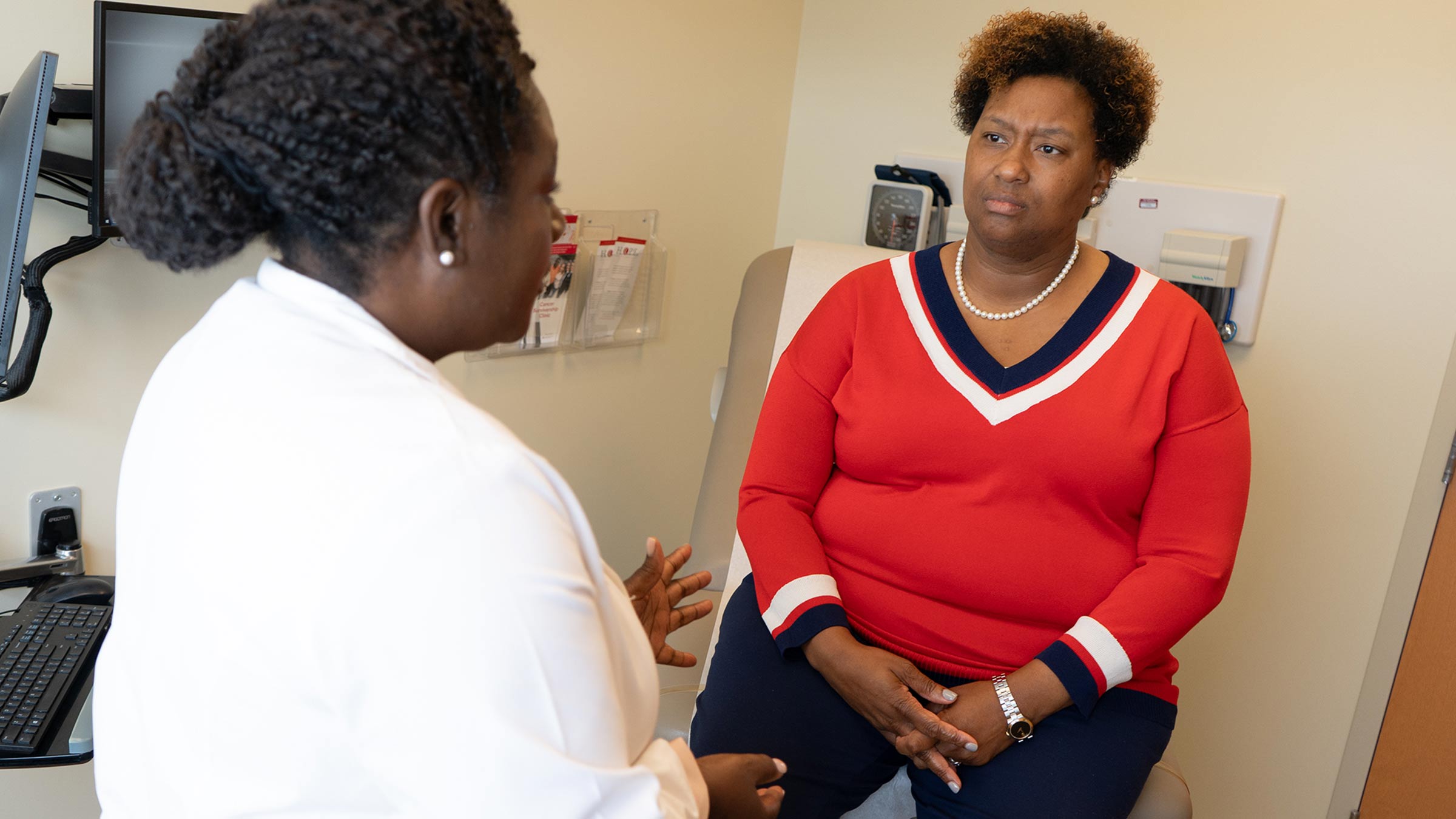
Thanks to new and better treatments and earlier detection, many types of cancer cases are on the decline, and survivor rates are increasing.
That hasn’t been the case for uterine (endometrial) cancer, which affects the lining of the uterus.
“Uterine cancer probably has the worst trend in the negative direction. It’s in fact the only cancer over the last four decades that has had decreasing survival,” says Casey Cosgrove, MD, a gynecologic oncologist who is also a member of the translational therapeutics program at the OSUCCC – James.
There’s a notable disparity between the rising number of uterine cancer cases among Black women and other minorities compared to white women.
Scientists are looking to see if there are specific mutations at the molecular level that could guide different treatment approaches and unlock another avenue of precision medicine.
The effort is being supported as part of the Biden Administration’s Cancer Moonshot program, which has a goal of slashing cancer deaths by 50% within 25 years.
Reasons for a disparity in uterine cancer cases
Since the mid-2000s, Black women have experienced more than a 2% increase per year in cases. White women are experiencing a 1% increase in cases, a rate that’s leveling off.
“We know that the disparity gap is most pronounced for Black versus white women,” Dr. Cosgrove says.
There are some known factors that contribute to disparities.
- Black women are more likely to have later-stage cancer when diagnosed with uterine cancer.
- Black women are more likely to have aggressive forms of uterine cancer.
- Black women typically have more doctors’ visits on average before they’re diagnosed with uterine cancer. For example, nonwhite patients may see a doctor two to three extra visits, compared to their white peers, before getting their cancer diagnosis.
- Black women are less likely to get the recommended treatments that follow recommended guidelines. For those who opt for surgery to treat uterine cancer, Black women are more likely to experience complications.
There are some overarching reasons for all races of women experiencing an uptick in cases.
Historically, if women suffered abnormal uterine bleeding as they aged, one of the first and only options offered was a hysterectomy.
Now, with more treatment options available, more women are opting to keep their uterus compared to women one or two generations ago.
“That many more women are living to an older age with a uterus in place and having a risk that this could develop into cancer. That’s contributing to some of the increases in numbers we’re seeing,” Dr. Cosgrove says.
Obesity, a disease that affects two in five Americans, can also lead to an increased risk of uterine cancer.
Examining biomarkers in uterine tumors
Even when taking those factors into account, disparity gaps still exist in white and Black patients and the type of uterine cancer they have.
“One of the main things we’re trying to evaluate is what might be going on at the molecular level that might be contributing to these poor outcomes,” Dr. Cosgrove says.
Dr. Cosgrove is part of a research team examining tumor tissue from 350 Black women and 350 white women. The women who participated in the study self-identified their race. “Perhaps there’s a marker or something that we can identify that could be helpful from a prognostic standpoint,” he says. “We’re in the era of precision medicine, where we’re getting a lot smarter with our cancer-directed therapies.”
Searching for answers in billions of pieces of data
The tumor samples used in the study are from a previous clinical trial that focused on aggressive types of uterine cancer.
The trial is analyzing DNA genome sequencing from the tumor samples.
“This will be able to tell us which mutations within the tumor might exist across different populations,” Dr. Cosgrove says. “Which mutations might be different in an individual’s genetic code? Or what risks they might have for hereditary cancer syndromes?”
The study is also examining structures within tumors to learn how the tumors function.
“Are there certain pathways or certain mechanisms within tumors that might be overly performed or underperformed that could contribute to some of the different outcomes?”
The sequencing for all of the tumors just finished. Now, some of the most challenging work begins by mining all the data.
“It’s looking at billions and billions of pieces of information and figuring out what's important and what’s not,” Dr. Cosgrove says.
The information from such studies can help further tailor cancer treatments.
There are now more options available with the emergence of immunotherapy, which helps the immune system fight cancer, and antibody-drugs, which use targeted antibodies to deliver drugs to cancer cells.
“Our hope is that through this study, we can provide the best precision medicine for diverse groups of patients with aggressive endometrial cancer,” Dr. Cosgrove says.

The choice is clear
Our experts develop and deliver the most advanced targeted treatments leading to better outcomes and more hope.
Learn More



